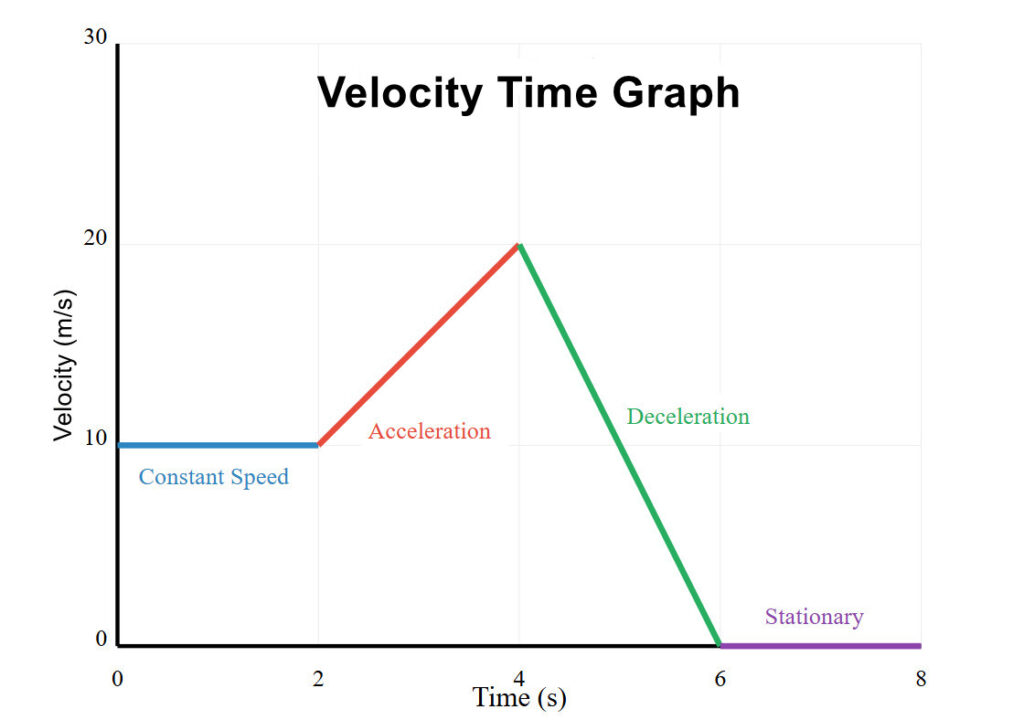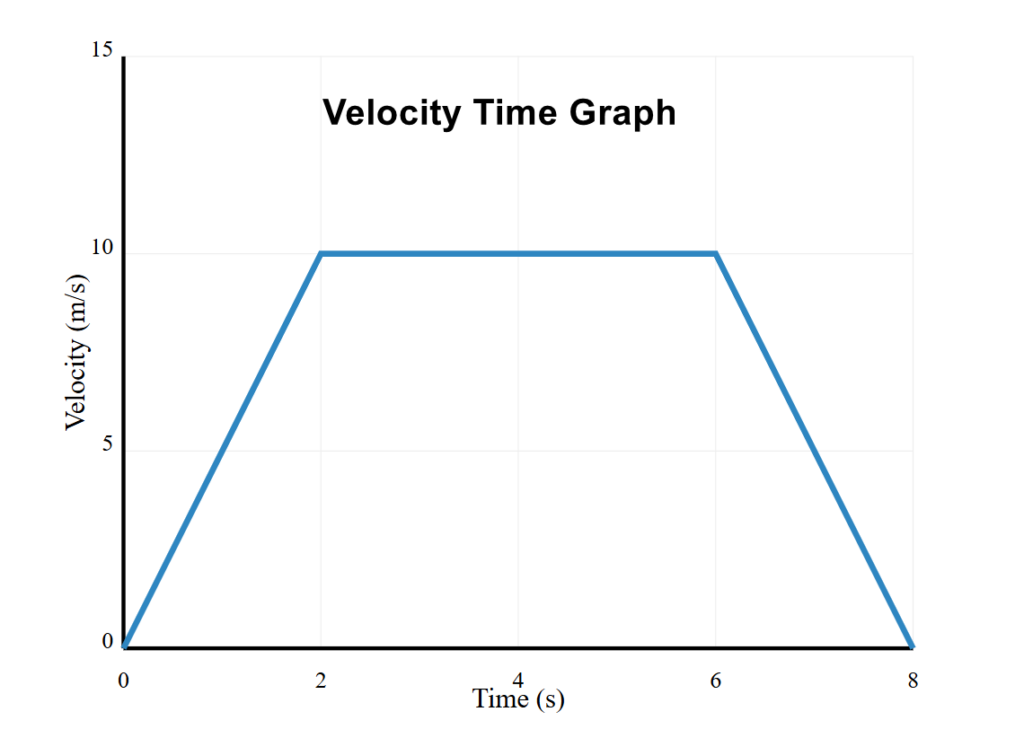A velocity-time graph shows how an object’s velocity (or speed) changes over time. The vertical axis (y-axis) represents speed, while the horizontal axis (x-axis) represents time.

From the diagram above, we can see the following
- Horizontal Line (Blue line)
- Represents constant speed
- No change in velocity
- Area under this line represents distance traveled
- Upward Slope (Red line)
- Represents acceleration
- Speed is increasing over time
- The steeper the slope, the greater the acceleration
- Area under this line represents distance traveled
- Downward Slope (Green line)
- Represents deceleration or negative acceleration
- Speed is decreasing over time
- The steeper the slope, the greater the deceleration
- Area under this line represents distance traveled
- Line at Zero (Purple line)
- Represents an object at rest
- No movement
- Speed remains at zero
- No distance is travelled
QUESTIONS #

- During which time period was the cyclist traveling at a constant speed?
- What was the cyclist’s maximum speed during the journey?
- Between 0 and 2 seconds, was the cyclist: a) Speeding up b) Slowing down c) Traveling at constant speed
- Between 6 and 8 seconds, what was happening to the cyclist’s motion
- For how many seconds did the cyclist maintain their top speed?
- What is the total distance traveled during the entire 8-second journey? (Hint: find the total area under the curve)
- During which 2-second interval did the cyclist cover the greatest distance? a) 0-2 seconds b) 2-4 seconds c) 4-6 seconds d) 6-8 seconds
- How far did the cyclist travel between 2-6 seconds? (Hint: this is the area of a rectangle)
ANSWERS #
- The cyclist traveled at constant speed between 2-6 seconds (this is shown by the horizontal line segment)
- The maximum speed was 10 m/s (shown on the y-axis where the horizontal line segment is)
- Answer: a) Speeding up (The line goes up from 0 to 10 m/s, showing acceleration/speeding up)
- Between 6-8 seconds, the cyclist was slowing down (decelerating), shown by the downward slope back to 0 m/s
- The cyclist maintained their top speed of 10 m/s for 4 seconds (from time=2s to time=6s)
- Total distance calculation:
- First section (0-2s): Triangle = ½ × 2s × 10m/s = 10m
- Middle section (2-6s): Rectangle = 4s × 10m/s = 40m
- Last section (6-8s): Triangle = ½ × 2s × 10m/s = 10m Total distance = 10 + 40 + 10 = 60 meters
- Answer: b) 2-4 seconds Explanation: During this time the cyclist maintained their highest speed (10 m/s) for the full 2 seconds, covering 20 meters. All other 2-second intervals either involved acceleration, deceleration, or lower speeds.
- Distance between 2-6 seconds = 40 meters Calculation: Area of rectangle = speed × time = 10 m/s × 4s = 40m
These




